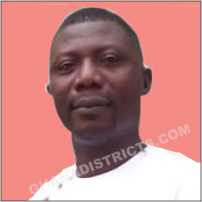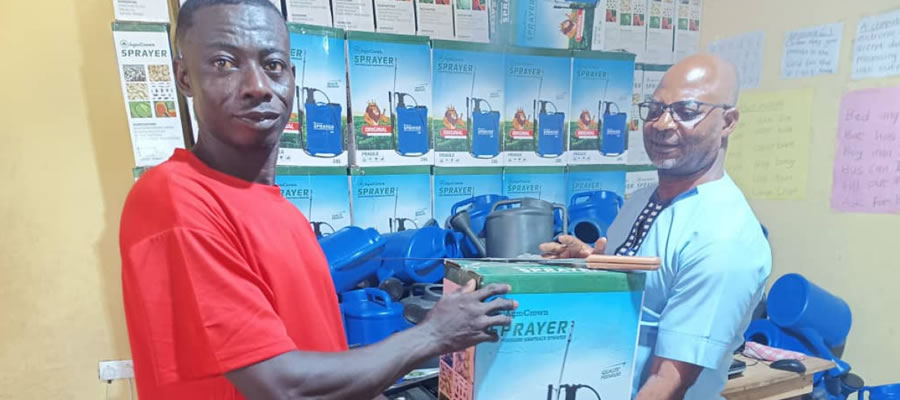

Educational Attainment
The quality of the population is measured, to a large extent, in terms of educational attainment. In this connection, the Survey showed that 47 percent of the investigated adult copulation had completed the primary or junior secondary while 12 percent had completed senior secondary education. But 39 percent had not attended any level of education, a formidable area to be addressed by non-formal education.
Number of schools and Enrolment
There are a total of 312 schools in the District with an enrollment of 35381 of whom 15865 are boys and 23388 are girls. There are 35 privately- owned schools, 12 of them pre-school, 13 primary schools, 9 JSS, and 1 SSS. Table: 9 type of school and enrollment 2006. There are three Senior Secondary schools Aburaman Secondary (enrollment 540), located at Abura Abakrampa secondary enrollment located near Abakrampa, and Aggrey Memorial Zion Secondary (enrollment 3054) located at Brafo Yaw near Moree.
Also there are the Asuansi Technical institute (enrollment 505) located at Asuansi and St. Vincent Secondary Commercial (enrollment 123) located at Abura Dunkwa, In the pre-school, girls accounted for 49.6 percent; in the Primary schools, 49.6 percent and in the junior secondary, 38.5 percent.
Number of Teachers and Pupil/Teacher Ratio
There are 1,132 teachers in the District engaged in the formal teaching-learning process in which 34,381 pupils/students are involved. There are 144 teachers engaged in pre-schools, 470 in Primary Schools, 329 in Junior Secondary, 189 in Senior Secondary, technical and vocational schools. On the average, each teacher in the pre-school is teaching 47 children, in the primary 31 pupils, in the JSS 17 and in the Senior Secondary 24 students.The PTR for Junior Secondary school is on the lower side and this could be as a result of the Districts Assembly’s sponsorship programme for teacher trainees.
Water Availability in Basic Schools
The availability of potable water in the school, as in any community, is essential for the practice of personal hygiene which contributes to good health and it is hoped that in the future the provision of potable water as well as toilet facilities will be incorporated in the general philosophy and culture of the design of the pleasant, friendly school environment whose impact on the child may be life-long..
School Improvement Measures
The poor state of school infrastructure, furniture, teaching aids, textbooks and library books as well as the disturbing malaise in school management, teacher motivation and unsatisfactory pupil performance, particularly in reading skills- all these and more have so combined and triggered so much unhappiness and concern by all stakeholders that the selection of the District for general assistance to three experimental schools under the Ghana Ministry of Education/USAID Quips partnership Schools Project is a welcome development.
This project is unique in its features. The elements include 1 Concentration at the school community level, emphasizing the pivotal partnership relationship between the particular schools and the specific community:(2)each school, its needs, and solutions are seen as unique, that is, each school is treated as a unique school personality, the emphasis of the teaching/learning process involving assessment, implementation,monitoring, evaluation, revision, redesign and sustained improvement in order to achieve capacity building leading to sustainability.
Under the project, three Primary Schools on a pilot basis were selected by the District Education Oversight Committee. The schools are (l)the Moree District Assembly Primary, an epitome of congesting 3 streams of pupils to accommodate 853 Pupils in a day, not mentioning the surrounding environmental abuse generally reflective of the underprivileged, (2) Katakyiase Catholic Primary, established in 1951 and with an enrolment of 178 representing the several development problems of Kwamankese Traditional Area of rurality and close by relatively prosperous, Fante Nyankumasi in Assin South and (3) Aboasi-Obohen Methodist Primary, established in 1947 with an enrolment of 432, representing the middle-of-the ground problems of the District,
The palpable results on the ground of the project are two-fold: Commitment, to be followed shortly by action, for the complete reconstruction of the Moree District Assembly Primary and the Ketakyiase Catholic Primary Schools. Equally, if not more important, is the result of the effort to attack head-on the vicious cycle of poor reading ability known to be prevalent all over the District and generally in the Nation. Using the unique teaching/learning process approach of the project backed by regular on -the-job training and supervision of teachers, an impressive improvement of reading skills has, in the last three terms of 23% as against 9 percent, has been registered in these pilot primary schools.
Non-Formal Education
Since 1992 Non-Formal Education continues to be provided learners in the District with skills in literacy and numeracy in the Fante Language commonly spoken in the District as well as in development activities, such as filling of pot holes and cleaning of surroundings depending on the topic of their basic primer, and income-generating investments, such as edible oil extraction and gari processing, thus integrating the basic tools of literacy and numeracy into real socio-economic life situations covering, as appropriate, such areas as nutrition, sanitation and environmental management, sewing, improved faming practices, child-mother care, family planning, drug abuse.
The two-year programme is headed by a District Organiser located at the District headquarters and assisted by supervisors responsible for activities in the 6 zones of Aboase, Ayeldu, Nyanfeku Ekroful, Asebu, Abakrampa and Moree. There are currently 94 classes each with a minimum of 15 learners and one teacher described as facilitator in the District, consisting of 54 classes attended by 1,523 first-year learners and 40 classes attended by 1,174 second-year learners. Of the 2,697 learners, there are 2,065 females and 632 males; all aged more than 15 years. Thus the majority of the learners are female adults, accounting for over three-quarters of the learning population. The 94 facilitators are also composed of 67 males and 27 females.
Other activities under the programme include the production of a District newspaper called OMAN MERE YTE, quarterly zonal community newspapers and group radio listening. At the end of each academic year, the second-year learners are assessed on the basis of which Certificates for the successful completion of the Basic Literacy Course are awarded by the Ministry of Education.
Date Created : 11/13/2017 4:24:16 AM











 facebook
facebook
 twitter
twitter
 Youtube
Youtube
 +233 593 831 280
+233 593 831 280 0800 430 430
0800 430 430 GPS: GE-231-4383
GPS: GE-231-4383 info@ghanadistricts.com
info@ghanadistricts.com Box GP1044, Accra, Ghana
Box GP1044, Accra, Ghana